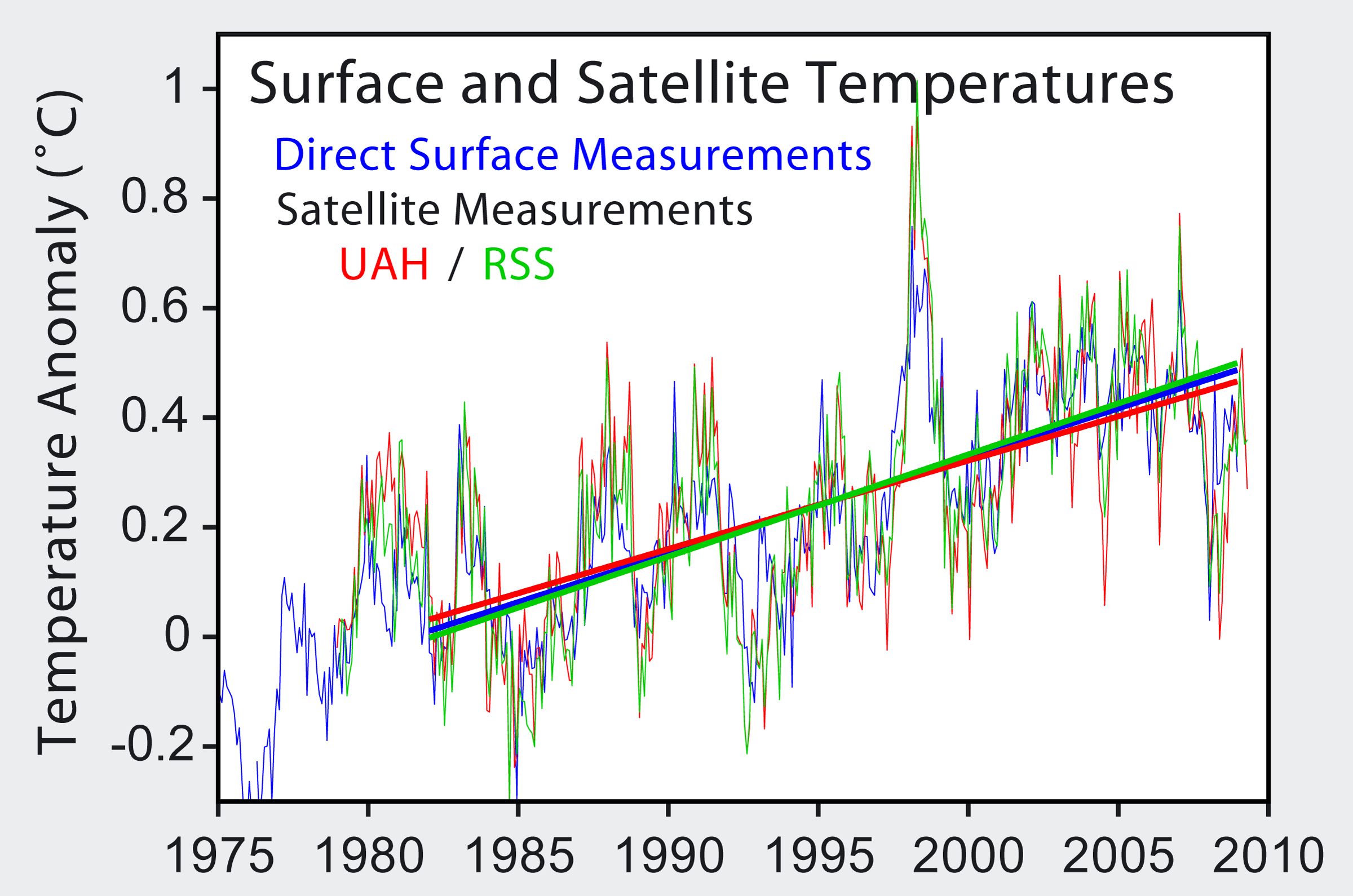This is an interesting discussion among folks with knowledge of the topic and who seem to be well enough informed to be off the scale of anyone's geek detector:
http://rankexploits.com/musings/2009/gisstemp-warmest-june-since-1998/
tetris (Comment#16279)
July 15th, 2009 at 9:45 am
Lucia,
In my experience [you know my background] there comes a point where a given source of information, regardless of subject matter, crosses a line where it loses basic credibility, and as a very minimum should be treated as a curious outlier or more appropriately, as suspicious and its data discarded. As I have posted before, GISS wandered into that realm quite some time ago [as evidenced at CA] and this latest data concoction puts it firmly over the edge.
There is a crucial difference between adjusting data on re-calibration grounds [as RSS and UHA have done] and blatantly cooking the books. Nylos observation says it all and I think youre making a mistake in continuing to include GISS data in your calculations. Doing so in the face of what we know might start to affect your credibility
Eric (Comment#16281)
July 15th, 2009 at 10:13 am
re: #16279
I disagree. Lucia does us all a service by posting tends and standard analysis of all the main data sources. If she didnt do this I, for one, would not know that GISS was such an outlier. Continuing to include it, IMO, only adds to the cred of this blog.
thanks & keep up the good work.
Eric (Comment#16284)
July 15th, 2009 at 10:32 am
oh, and
This is not my field, but where I come from any data set that becomes such an outlier has some splainin to do.
Is it reasonable to expect an explanation from the GISS folks now?
lucia (Comment#16286)
July 15th, 2009 at 10:39 am
Eric
I dont think GISSTemp is an outlier. GISS and NOAA have higher recent trends than Hadley, RSS and UAH which are similar to each other. But, we need to remember that
* RSS and UAH measure slightly different things than GISSTemp, NOAA and HadCrut,
* RSS and UAH just process the same information differently.
* NOAA, HadCrut and GISSTemp all select from similar raw sources and then process a little differently.
So, we cant know what the differences mean. If one ends up way out of whack relative to others over the long haul, then well begin to know. But the difference in short term trends
well.. that tells us something about measurement noise!
MikeN (Comment#16287)
July 15th, 2009 at 10:50 am
OK, I thought you were doing trends from June to June.
lucia (Comment#16290)
July 15th, 2009 at 10:54 am
MikeN
I nearly always start trend in January. That convention at least minimizes the total range of possible cherry picking! (Imagine if we could just run a script hunting for the start month and end month that give the right answer! On top of that, define the filter width M that we like and so on.)
Eric (Comment#16299)
July 15th, 2009 at 12:28 pm
Lucia -
Thank you for setting me straight. I appreciate the education.
hunter (Comment#16351)
July 15th, 2009 at 9:39 pm
Is there any reason, considering the political activity of GISS and the demonstrated warming bias of their data sources, to give this any real credibility? Especially since this product is now an outlier?
David Gould (Comment#16352)
July 15th, 2009 at 9:50 pm
Except
its not an outlier. And, given that el nino conditions starting during June, warming for that month is to be expected.
tetris (Comment#16356)
July 15th, 2009 at 10:46 pm
Hunter [16351]
This goes to the heart of the question: whereas the satellite data [UHA, RSS and e.g Argos] and other metrics show an absence of warming over the past +/- decade, GISS and HAD data series have without exception and invariably been adjusted upwards to show not only warming but an increased rate of warming, the latest adjusted GISS anomaly data being par for the course. A number of observers [yours truly included] have commented that given our growing understanding of natural variations in weather/climate, this accelerating upward set of trend adjustments [the June anomaly being an order of magnitude out relative to the satellite data] is quite simply impossible, and that therefore, by extension the credibility of the GISS and HAD data series has become singularly suspect. I am not alone in thinking that it is the GISS data series as a whole that should be treated as the true anomaly, and not as our host continues to do, as a legitimate basis for trend calculations.






 ] is -1.45 degrees C below last century's average.
] is -1.45 degrees C below last century's average. 


